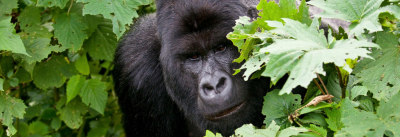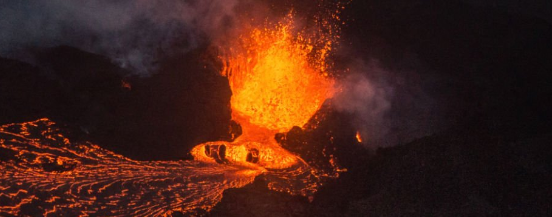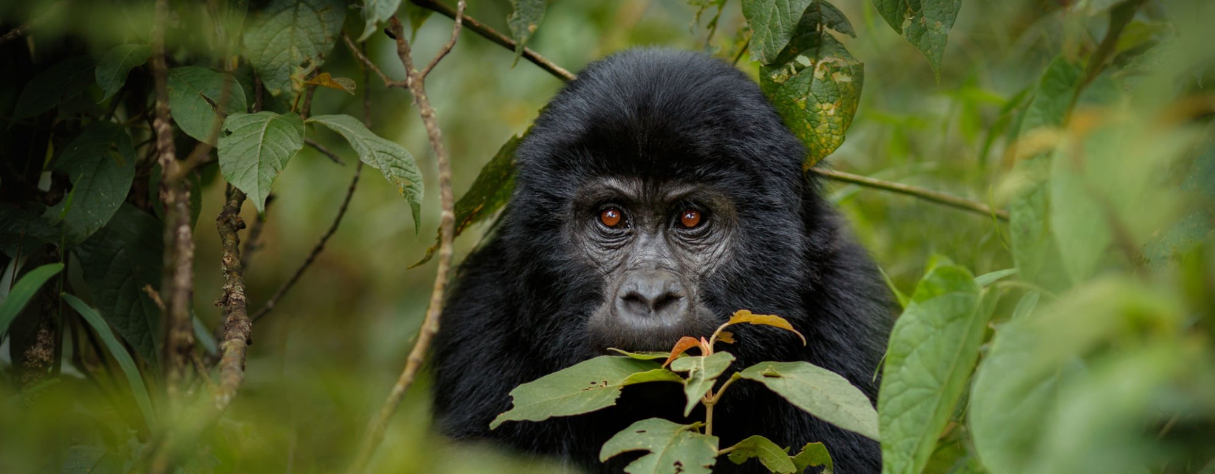Uganda Safaris: Unveiling the Pearl of Africa's Natural Wonders
Uganda safaris offer an enchanting experience, drawing visitors into the heart of Africa with its diverse landscapes and abundant wildlife. Known as the ‘Pearl of Africa’, Uganda boasts a rich tapestry of grasslands, tropical forests, and sparkling lakes, making it a premier destination for wildlife enthusiasts, adventure seekers, and eco-tourists.
Embarking on a safari in Uganda, you can expect to encounter a myriad of wildlife, from the majestic lions and elusive leopards to the bustling herds of elephants and buffaloes. The country is particularly renowned for its primates, including the endangered mountain gorillas and playful chimpanzees, which provide a once-in-a-lifetime opportunity for close wildlife interaction.
Beyond the thrill of wildlife spotting, Uganda safaris are imbued with cultural interactions that offer a glimpse into the traditional lifestyles and customs of the local tribes. Visitors can engage with communities, participate in cultural dances, and learn about the ancestral heritage that is woven into the daily lives of the Ugandan people.
Adventurers can also indulge in a variety of activities that test endurance and provide unique perspectives of the natural beauty. These include white-water rafting on the Nile River, mountain biking through scenic routes, and hiking in some of the country’s lush terrains.
Uganda’s commitment to conservation is evident in its eco-friendly safari practices and the community-driven initiatives that protect its natural resources and ensure the well-being of its wildlife. As you traverse through this captivating country, the blend of spectacular landscapes, rich biodiversity, and warm hospitality makes Uganda safaris not just a journey, but an unforgettable exploration of nature’s wonders.
Our Uganda Tours
Uganda Safaris Destinations: A Guide to National Park Activities
Uganda, often referred to as the “Pearl of Africa,” offers an impressive array of national parks, each with its unique allure and activities. Here’s a closer look at the activities you can enjoy in each of Uganda’s ten national parks.
Murchison Falls National Park
Murchison Falls National Park is famous for its breathtaking waterfall where the Nile River explodes through a narrow gorge. Safari-goers can enjoy game drives to see lions, giraffes, and elephants. Boat trips to the base of the falls offer excellent bird-watching opportunities and the chance to see crocodiles and hippos.
Queen Elizabeth National Park
This biodiverse park is known for its wildlife, including tree-climbing lions, elephants, and leopards. The Kazinga Channel, linking Lake Edward and Lake George, provides a unique boat cruise to view aquatic animals and a plethora of birds.
Bwindi Impenetrable National Park
A haven for mountain gorillas, Bwindi allows for once-in-a-lifetime gorilla trekking experiences. This dense rainforest is also a great spot for bird watching, with several endemic species.
Kibale National Park
Kibale is the best place in Uganda to see chimpanzees in their natural habitat. The park offers guided chimp tracking, forest walks, and bird watching, featuring over 325 bird species.
Rwenzori Mountains National Park
Known for its challenging hikes, Rwenzori Mountains National Park offers trails with stunning views and the opportunity to climb Mt. Stanley, Africa’s third-highest peak. The unique montane flora and fauna make it a must-visit for adventurous trekkers.
Kidepo Valley National Park
Remote and wildly beautiful, Kidepo offers some of the best wildlife viewing in Uganda. Activities include game drives, walking safaris, and cultural visits to the local Karamojong communities.
Lake Mburo National Park
As the smallest of Uganda’s savannah national parks, Lake Mburo is perfect for walking safaris, horseback safaris, and boat trips on the lake, offering close encounters with animals like zebras and hippos.
Mgahinga Gorilla National Park
Alongside gorilla trekking, Mgahinga offers the chance to hike volcanoes and explore caves. Bird watching and the rare golden monkey trekking are also popular activities.
Semuliki National Park
Semuliki is famed for its Sempaya hot springs and diverse bird life. Visitors can explore the tropical lowland forest on guided walks, bird watching, or visiting the local Batwa communities.
Mount Elgon National Park
Ideal for more relaxed hikes, Mount Elgon offers numerous trails that lead through varied landscapes of waterfalls, caves, and hot springs. The park also provides opportunities for rock climbing and bird watching.
Each of Uganda’s national parks provides a distinct and unforgettable safari experience, inviting travellers to explore its wildlife, landscapes, and cultural heritage.
Embarking on a safari through Uganda’s national parks presents a varied and exciting adventure that caters to nature lovers and thrill-seekers alike. Whether you’re trekking through lush rainforests, cruising on pristine lakes, or encountering diverse wildlife, each park offers a unique experience.
Tailoring Your Visit
To fully appreciate the diversity of Uganda’s national parks, visitors should consider their interests and physical capabilities. For instance, while Bwindi and Mgahinga cater to those interested in primate trekking, the Rwenzori Mountains attract those looking for rigorous hikes and stunning mountainous views.
Wildlife Conservation Efforts
Uganda’s national parks are at the forefront of conservation, working to protect habitats and ensure the survival of species. Visitors contribute to these efforts through park fees and by engaging with community-run projects that help to sustain local economies and wildlife preservation.
Cultural Experiences
In addition to wildlife, many of Uganda’s national parks offer cultural experiences, providing insight into the lives of the indigenous communities. From the Batwa in Mgahinga to the Karamojong in Kidepo Valley, these interactions enrich visitors’ understanding of Uganda’s cultural diversity.
Best Time to Visit
The best time to visit Uganda’s national parks varies depending on the region and activities of interest. Generally, the dry seasons from June to August and December to February offer easier trekking conditions and better wildlife viewing opportunities. However, bird watchers might prefer the wet seasons when migratory birds are present.
Planning Your Safari
When planning a safari to Uganda, it’s advisable to work with a reputable tour operator who understands the logistics and timing needed to maximise the experience in different parks. Accommodations range from luxury lodges to basic campsites, catering to a broad spectrum of preferences and budgets.
Uganda’s ten national parks each provide a gateway to exploring the wild heart of Africa. Whether it’s the roar of Murchison Falls, the quiet majesty of mountain gorillas, or the rugged terrains of Kidepo Valley, a safari here is bound to be an unforgettable journey into nature’s most pristine settings.
Ultimate Uganda Safari: Your Top 10 Questions Answered Concisely
What is the best time to visit Uganda for a safari?
The ideal time to visit Uganda for a safari is during the dry seasons, spanning June to August and December to February. During these months, the weather is predominantly sunny and dry, making it easier to navigate the parks and spot wildlife, as animals tend to congregate around water sources. This period also offers the best conditions for gorilla trekking in Bwindi and Mgahinga Gorilla National Parks. Planning your visit during these times maximises your chances of a rewarding safari experience.
Can I see gorillas in any park other than Bwindi?
Yes, apart from Bwindi Impenetrable National Park, you can also experience gorilla trekking in Mgahinga Gorilla National Park in Uganda. Mgahinga is part of the Virunga Mountains, which span across Uganda, Rwanda, and the Democratic Republic of Congo. This park offers a unique setting for gorilla trekking as it sometimes hosts the migratory Nyakagezi gorilla group, known for its impressive silverbacks.
Mgahinga Gorilla National Park, although smaller than Bwindi, provides a distinct and dramatic landscape that enhances the gorilla trekking experience. The park is less crowded, offering a more intimate encounter with the gorillas amidst scenic volcanic slopes. Permits for Mgahinga are also required and should be booked in advance due to limited availability, similar to Bwindi. Engaging in this unforgettable wildlife experience contributes to the conservation of the endangered mountain gorillas and their fragile habitat.
Are there opportunities to interact with local communities during my visit?
Yes, Uganda's national parks offer numerous opportunities to interact with local communities during your visit, providing a rich cultural dimension to your safari experience. In parks like Kidepo Valley National Park, you can engage with the Karamojong people, known for their traditional pastoral lifestyle and distinctive cultural practices. Similarly, Mgahinga Gorilla National Park allows visitors to meet the Batwa pygmies, indigenous forest dwellers who share their ancient knowledge of the forest and traditional survival skills.
These cultural encounters are thoughtfully designed to respect the traditions and economic well-being of the communities while providing visitors with an authentic and enlightening experience. By participating in these interactions, you not only gain insight into Uganda's diverse cultural heritage but also contribute to local livelihoods, ensuring that tourism has a positive impact on these communities.
What wildlife can I expect to see in Queen Elizabeth National Park?
Queen Elizabeth National Park in Uganda is a sanctuary for a remarkable variety of wildlife, making it a must-visit destination for nature enthusiasts. As you explore the park, expect to encounter the famous tree-climbing lions that are often spotted lounging in fig trees or acacias. This park also hosts large herds of elephants, several herds of buffalos, and elusive leopards.
Additionally, the park is home to other animals such as Uganda kob, warthogs, waterbucks, and giant forest hogs. The Kazinga Channel, a prominent feature within the park, offers boat tours where you can see crocodiles and a dense population of hippos. Over 600 bird species also reside here, making it a paradise for bird watchers. The diverse habitats, including savannah plains, wetlands, and forests, support this rich array of fauna, ensuring a thrilling wildlife viewing experience in Queen Elizabeth National Park.
Is it possible to go on walking safaris in all the national parks?
Walking safaris are a fantastic way to immerse yourself in Uganda's breathtaking landscapes and wildlife. However, not all national parks in Uganda offer walking safaris due to varying terrain and wildlife considerations. Parks like Lake Mburo National Park are particularly well-suited for walking safaris, offering visitors the unique opportunity to closely encounter wildlife such as zebras and impalas on foot. Additionally, Kidepo Valley National Park provides guided walking safaris that allow you to explore the savannah and interact with the indigenous Karamojong people.
For those interested in forest environments, Bwindi Impenetrable National Park and Mgahinga Gorilla National Park also offer guided nature walks, giving a different perspective of the forest's ecosystem and a chance to spot birds and smaller species. Always check with park authorities or your tour operator about the availability of guided walks and any specific requirements or restrictions that might apply.
What are the trekking options in Rwenzori Mountains National Park?
Rwenzori Mountains National Park offers a variety of trekking options that cater to different levels of hikers and adventurers. The most popular is the Central Circuit Trail, a seven to twelve-day trek that takes you through diverse landscapes, including lush rainforests, alpine meadows, and glacier-carved valleys. For those seeking a less demanding adventure, the shorter treks like the three-day Mahoma Loop provide a glimpse into the park's stunning biodiversity and scenic vistas without the need to reach the high peaks.
For the ultimate challenge, climbers can attempt to summit Margherita Peak on Mt. Stanley, which at 5,109 meters is the third-highest point in Africa. This trek requires more technical climbing skills, especially as you approach the glacier-covered summit.
Each trek offers unique opportunities to witness the park's extraordinary flora and fauna, making Rwenzori Mountains National Park a premier destination for trekking enthusiasts looking to experience one of Africa's most spectacular landscapes.
Do I need any special permits for gorilla trekking?
Yes, special permits are required for gorilla trekking in Uganda, specifically for Bwindi Impenetrable National Park and Mgahinga Gorilla National Park. These permits are essential as they regulate the number of visitors to ensure minimal disturbance to the gorillas and contribute directly to conservation efforts. Each permit allows you to spend one hour with the gorillas after reaching them, which can involve a challenging trek through dense forest.
Due to the popularity and limited availability of these permits, it is advisable to book them well in advance, sometimes as early as six months prior to your visit. The cost of the permits can vary, typically ranging from $600 to $700, depending on the season. Booking can be done through a registered tour company, which can also assist in planning your entire trekking experience, ensuring compliance with all regulations and contributing to a seamless and responsible safari adventure.
What type of accommodation can I expect in Uganda's national parks?
Accommodation options in Uganda's national parks cater to a range of tastes and budgets, ensuring every traveller finds a comfortable place to stay amidst the stunning natural beauty. From luxury lodges to eco-friendly cottages, the choices are varied and equipped with amenities to enhance your safari experience.
Luxury seekers might enjoy the newly opened Savannah Plains Lodge in Queen Elizabeth National Park, which offers panoramic views and modern comforts in a wilderness setting. For those preferring a closer-to-nature experience, the Gorilla Mist Camp in Bwindi Impenetrable National Park provides rustic yet cosy cottages, ideal for relaxing after a day of gorilla trekking.
Mid-range options include the Kidepo Savannah Resort, known for its traditional architecture and excellent service, located at the edge of Kidepo Valley National Park. Budget travellers can opt for community-run guesthouses, such as the Rwenzori Turaco View Campsite, which offer basic accommodations with the charm of local hospitality.
Each of these accommodations not only ensures a memorable stay but also supports local communities and conservation efforts, aligning perfectly with the eco-tourism ethos prevalent across Uganda's national parks.
Are the national parks in Uganda suitable for bird watching?
Yes, Uganda's national parks are exceptional destinations for bird watching, offering some of the most diverse and accessible birding experiences in Africa. With over 1,000 bird species, including several Albertine Rift endemics, Uganda is a must-visit for ornithologists and casual bird watchers alike.
Bwindi Impenetrable National Park is renowned for its variety of birds, with species such as the African Green Broadbill and Shelley’s Crimsonwing. Kibale National Park offers bird enthusiasts the chance to spot the Green-breasted Pitta among other forest species. For a birding experience combined with stunning scenery, Queen Elizabeth National Park provides habitats ranging from wetlands to savannahs, home to over 600 bird species including the rare Shoebill Stork. Additionally, the remote Semuliki National Park, with its central African wildlife characteristics, is ideal for spotting Congo Basin endemics.
Whether you are an avid birder or a newcomer, Uganda’s national parks provide a spectacular backdrop for bird watching, making them a top choice for nature lovers.
How can I contribute to conservation efforts while visiting the parks?
Contributing to conservation efforts while visiting Uganda's national parks is a vital aspect of responsible tourism. By choosing to pay your park fees, you directly support the maintenance and conservation activities within the parks. These fees help fund wildlife protection initiatives and habitat restoration projects, ensuring the parks remain pristine and vibrant for future generations.
Engaging with eco-friendly tours and activities also promotes conservation. Look for tours that have a clear commitment to sustainability, including those that use renewable energy sources and implement waste reduction practices. Supporting local community enterprises can also make a significant impact. Many communities around the parks produce handicrafts, run cultural workshops, and offer guided tours that provide alternative livelihoods and reduce the economic pressure on natural resources.
Lastly, spreading awareness by sharing your experiences on social media or within your community can inspire others to adopt responsible travel habits and support conservation efforts globally.










































